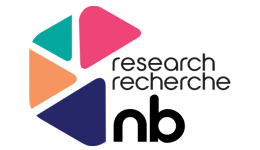
Disrupting Policy: The Case for Innovation in Public Policy Development
Authors & Credentials: Candice A. Pollack, LL.B., B.C.L. , executive director
Affiliated Institution(s): AGE-WELL National Innovation Hub APPTA Inc.
Acknowledgements: Acknowledgements to Amy Palmer, PhD and Rosalie Wang, PhD for their support in discussing the real-world implications of Big Data in health policy decision-making.
What challenge inspired this idea?
Canada is currently facing a confluence of complex social, economic, cultural, and political challenges, especially in relation to our aging population. What I mean by complex in this context is as distinguished from complicated. A complicated challenge is one where, through the right knowledge, process, formulas, or rules, an agreed upon answer will eventually be found. Landing on the moon is often cited as a complicated challenge; it was an incredibly difficult problem, but there was a single solution that was developed and universally agreed upon. A complex challenge can be described as a problem that does not lend itself to a “right” solution for everyone. These challenges often involve many unknowns and interrelated factors that make it difficult to distinguish root causes from symptoms, and usually require value judgments to be made by society as a whole in order to come to a solution. The aging of our population that we are currently experiencing in Canada is giving rise to a number of these complex challenges. For example, consider the fact that our healthcare and social services systems were structured several decades ago, with a very different demographic picture in mind. Today, older adults are not only surviving through co-morbidities and cognitive diseases, they are looking for the means to continue to thrive despite them. However, our health and social services do not yet have the capacity to offer all older adults the appropriate supports to live safely with a diagnosis of dementia for example, or to continue to interact with their community when they lose mobility as another. Addressing these challenges across a multiplicity of healthcare systems, a diversity of older adults, and a range of geographic settings makes for a level of complexity that only increases as time goes on and additional considerations arise.
Briefly summarize your idea.
I believe that population aging presents an opportunity as much as it does a challenge, especially with the new tools at our disposal to make better, more informed decisions. Public policy innovation is going to be key to developing solutions, but, in order to truly effect change, we will need to begin embracing disruption in the way that we do things. Corporations in Canada are already changing the way they do business, leveraging Big Data and new technologies to refine their processes, enhance their productivity, and improve their products. Can we do the same in policy decision-making?
Is there potential for this idea to have real-world impact on the challenge area?
The answer is yes, and I have a few suggestions about how. First, our society needs to learn how to harness the power of Big Data and its accompanying technologies for the public good. More detailed data about more people in more places can help decision-makers identify what the root causes of a problem are, where resources are most needed, and which interventions should be targeted to which population. There are undoubtedly dangers here (re: protecting privacy interests, avoiding machine bias, etc.), and policy-makers will need to be cautious in their use of these tools, but they are nonetheless valuable to our ability to develop innovative solutions.
Second, we should explore other, complementary processes for public policy development. Our existing process can often leave little room for co-creation with affected individuals and populations, which is becoming more and more instrumental to an intervention’s success. It also fails to offer much flexibility once a decision has been made, even if that decision has unintended and deleterious consequences. When looking to create solutions to complex challenges, we can leverage models like innovation labs for co-creation, and policy prototyping for rapid and flexible interventions to allow us to make better, more effective population level decisions.
And finally, we need to focus on enhancing our skills in collaboration and knowledge translation. The Canadian research community is filled with bright, creative, and adaptive people who have much to offer in co-developing policy solutions. We should be directing our energies on forming important policy-research partnerships that will drive great ideas from the lab to the real world.
As noted above, if we want to truly effect change, we need to be willing to take on the chaos of disruption, not just in our decisions, but in our processes. There are lots of resources, tools, and technologies at our disposal that can support our efforts in making more informed policy decisions—it’s time to explore how to use them.

